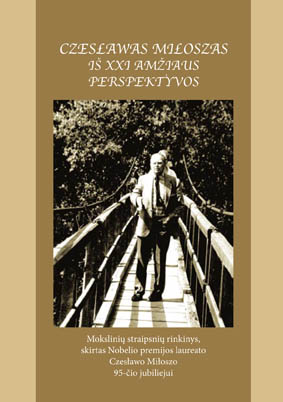Czesławo Miłoszo „Dainelės apie porcelianą“ meninių vertimų semiotinė analizė
Semantic Analysis of the “Song on Porcelain” by Czesław Miłosz
Author(s): Alla KamalovaSubject(s): Literary Texts
Published by: Vytauto Didžiojo Universitetas
Keywords: Czesław Miłosz; konferencija; conference; Kaunas
Summary/Abstract: In the process of textual interpretation, the ontological basis of the relations “human-versushuman” is of essential importance for the exploration since it is constructed on the fundament of such concepts as “text”, “language” and “understanding”. The term “understanding” is used here the way it was used by Heidegger. Understanding functions as an explaining characteristic, as a way of human existence. A peculiarity of textual understanding (mostly poetic texts) may lie in the fact that the author and the reader are separated by language and culture barrier(s). As a result, there arises a problem of the interpretation of the translated poetry since it is essential to take the issues of the principle of reading and the process of communication into consideration. A semantically heterogeneous text with multiple layers must develop complex relationship both with the surrounding cultural context and the reader audience; the social-communicative function of such a text gets more complicated. Five essential communicative processes, one of which is “the communication between the reader and the text” must be mentioned here. The object of the present analysis is the Russian translation of the poem in Polish “Song on Porcelain” (Washington, 1947) by Czesław Miłosz performed by Vladimir Britanishsky. In the process of textual interpretation, a strategy which can be called the “word line” will be fundamental. The understanding of a text takes place on the level of its interpretation, in the process of which, addressing various historical and cultural facts is possible by the way of the development of considerations in the following direction: the subject of description"features of the subject"symbolic meaning"interpretation of the text and its informative value. The involvement into the textual space foregrounds the synaesthesis in the process of image creation; the poem is enriched in visual, audio and “inner” (emotional) experiences. In the poetry of the end of the 19th and the beginning of the 20th century, the address to synaesthesis, i.e. to visual-associative, visual-experiential, colour-musical and other ways of seeing the world was based on the word artists’ strife to the development of the unity of image. However, the image of porcelain is not conceived as the whole: its boundaries are blurred and torn. This understanding is produced by the cinematographicity of the text. The peculiarities of the poetic technique by Czesław Miłosz as they have been revealed in the present article may be interpreted as post-modernist, especially the collage-style artifacts, decorativeness, paradoxicality, sublimated anthropomorphism, feminism as the superiority of aesthetics with the feminine element.
Journal: Česlovo Milošo skaitymai
- Issue Year: 2007
- Issue No: 1
- Page Range: 197-211
- Page Count: 15
- Language: Lithuanian

